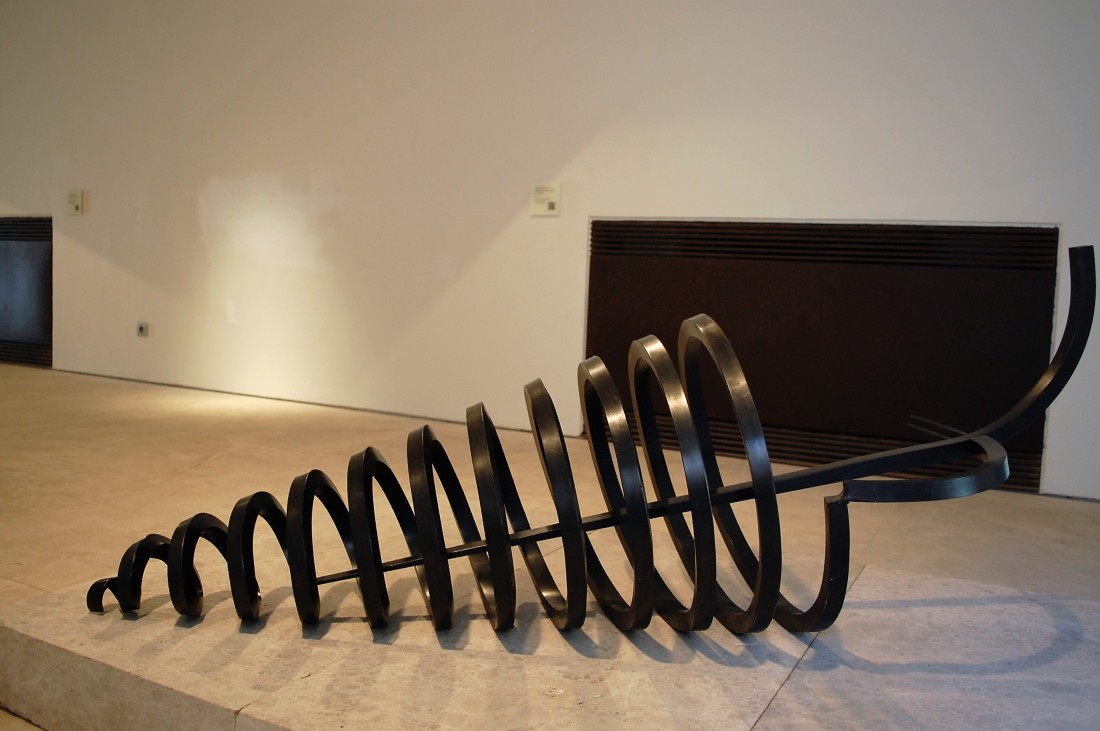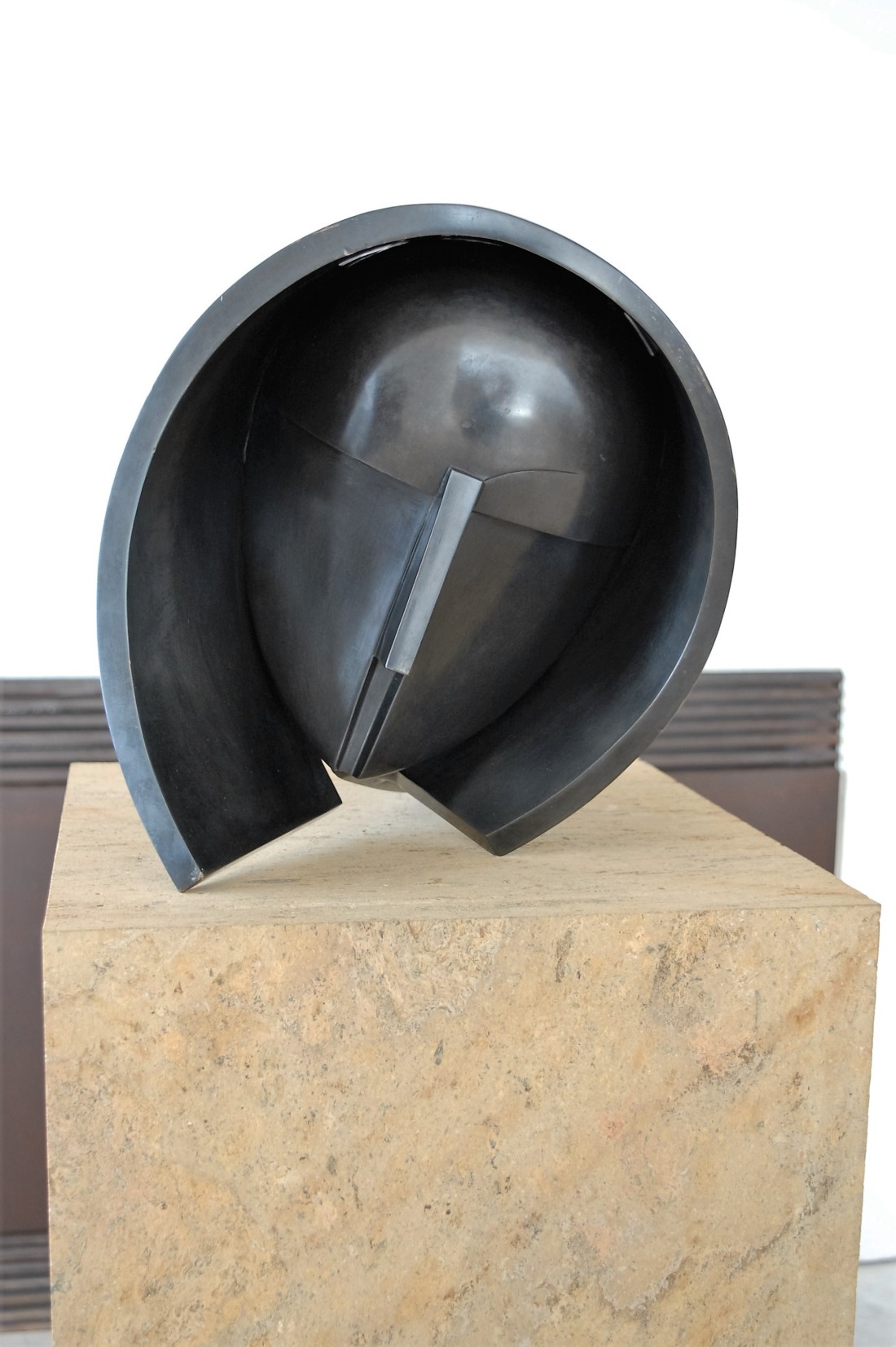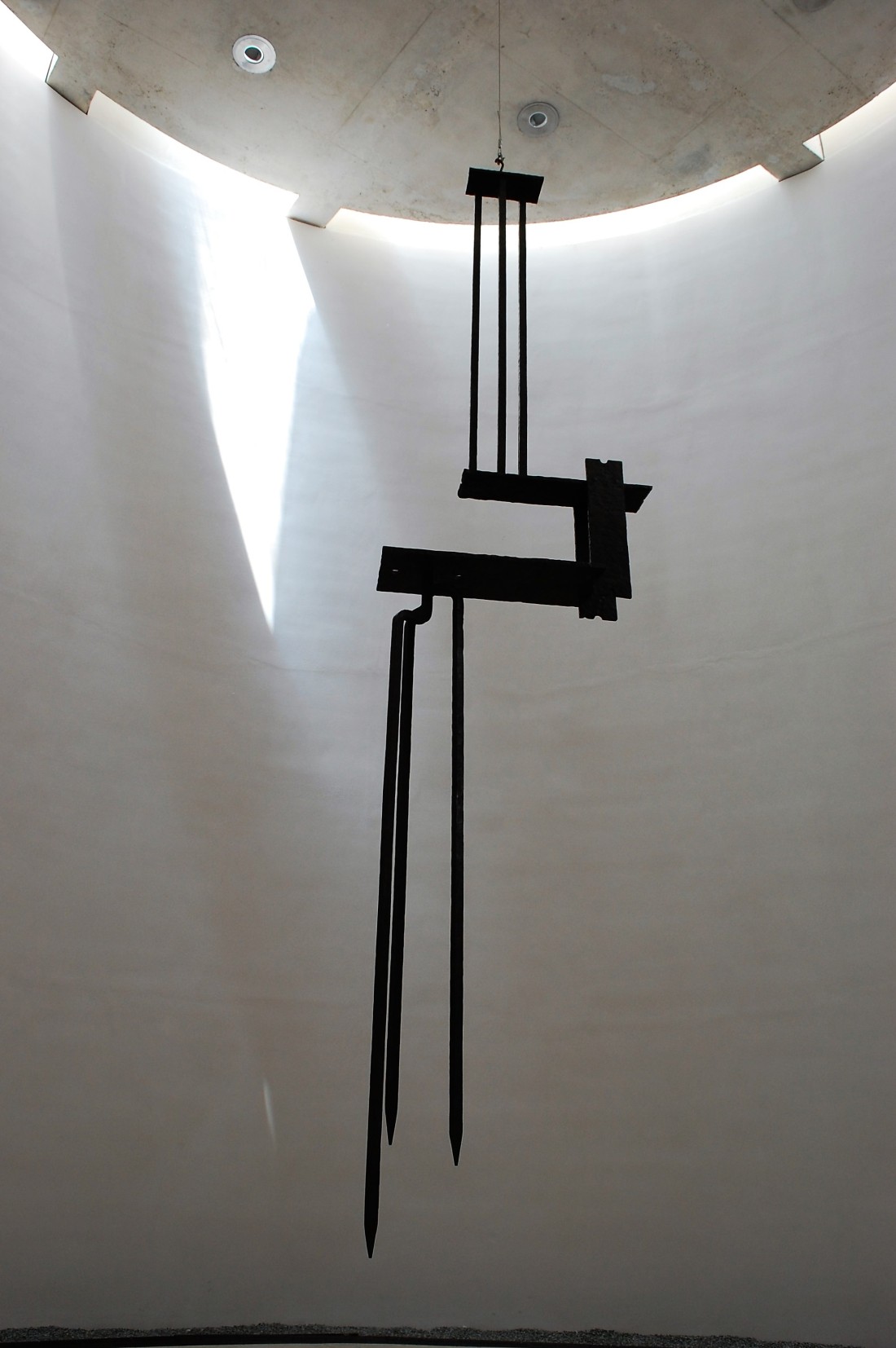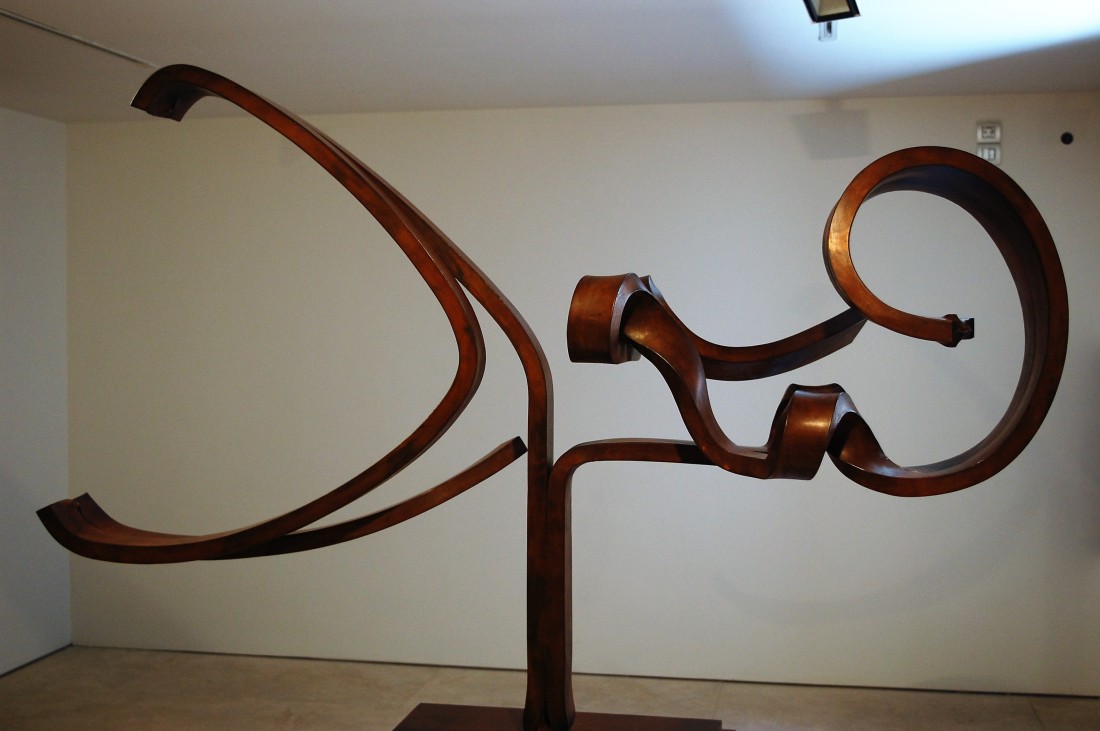
Martín Chirino got his first education in working with metal from his father, who worked at a shipyard. With a scholarship he went to Madrid to study sculpture at the Real Academia de Bellas Artes de San Fernando. He finished his studies in Gran Canaria and set up his own atelier. During this time he came to know the Canarian Aboriginal culture, which became an important source of inspiration to him. A good example of this influence is Chirino’s interest in spirals, to be found in many of his works on paper and his sculptures. For Chirino it is a symbol of power, tension and movement.


The spiral is also found in Chirino’s Santa Teresa, but this sculpture is a little more intricate. One side consists of a pulled out spiral, though walking around shows this spiral is actually constitutes a hood for what appears to be a face. The title of the work confirms this explanation and adds a religious meaning to it in the form of Saint Teresa, a Carmelite nun who wrote about her ecstatic encounter with an angel. This piece and some others are reminiscent of sculptures by Constantin Brâncuşi (1876-1957), whose work Chirino probably saw on his trip to Paris in 1952.

On the same visit to Paris Chirino was also acquainted with the work of the Spanish sculptor Julio González (1876-1942), which also became exemplary to his own sculptures. Chirino’s Herramienta Poética e Inútil (2) among others shows González’ influence quite well.


Forging iron seems like a more laborious task than for example casting bronze and yet Chirino makes it look like it takes him no effort. Chirino gets the utmost expression out of his medium, while using the smallest amount of it possible. His iron sculptures seem light and elegant, where heavy and coarse are characteristics usually ascribed to the material. This contrast makes the sculptures a surprise for the eye.
Photographs by author.